
AZ-140: Configuring and Operating Microsoft Azure Virtual Desktop
PDFs and exam guides are not so efficient, right? Prepare for your Microsoft examination with our training course. The AZ-140 course contains a complete batch of videos that will provide you with profound and thorough knowledge related to Microsoft certification exam. Pass the Microsoft AZ-140 test with flying colors.

Curriculum for AZ-140 Certification Video Course
| Name of Video | Time |
|---|---|
 1. Exercise: Azure Virtual Desktop Experience Estimator |
2:00 |
 2. Azure Cost Estimation Tool - Azure Calculator |
7:00 |
| Name of Video | Time |
|---|---|
 1. What is Azure Virtual Desktop |
8:00 |
 2. Traditional VDI/RDS VS Azure Virtual Desktop |
3:00 |
 3. Azure Virtual Desktop Design and Architecture |
6:00 |
 4. Azure Virtual Desktop Management |
10:00 |
 5. Azure Virtual Desktop Environment |
6:00 |
 6. Windows 10 Enterprise Multi-Session |
5:00 |
| Name of Video | Time |
|---|---|
 1. Prerequisites and Deployment Components |
5:00 |
 2. Identity Deployment Options |
5:00 |
 3. Compute Deployment Options |
2:00 |
 4. Load Balancing Options |
4:00 |
 5. Users Profiles Deployment Options - FSLogix |
10:00 |
 6. Virtual Machine Sizing Recommendations |
6:00 |
 7. WVD Network Guidelines |
5:00 |
 8. Remote Desktop Clients to Connect to AVD Resources |
3:00 |
 9. Cost & Licensing |
11:00 |
 10. Microsoft Pricing Example Scenarios |
8:00 |
| Name of Video | Time |
|---|---|
 1. Project Overview and Setup |
10:00 |
 2. Create needed admin accounts |
5:00 |
 3. Connect Identity infrastructure to Azure AD |
5:00 |
 4. Check the Identity Sync |
1:00 |
 5. Create Azure AD groups for Azure Virtual Desktop |
5:00 |
 6. *NEW* - Alternative Identity Option: Azure Active Directory Domain Services |
17:00 |
| Name of Video | Time |
|---|---|
 1. Create Storage Account |
4:00 |
 2. Create Azure file share |
3:00 |
 3. Install the AzFilesHybrid Module |
5:00 |
 4. Enable Active Directory Authentication for the Storage Account |
6:00 |
 5. Verify Azure Storage account Registration with Active Directory domain |
2:00 |
 6. Azure built-in roles for File Share permissions |
4:00 |
 7. Configure File Share Permissions |
6:00 |
 8. Configure NTFS permissions for the file share |
6:00 |
 9. Create FSLogix Containers & Configure NTFS permissions |
6:00 |
 10. *NEW* - Migrate local profiles into Azure Storage |
2:00 |
| Name of Video | Time |
|---|---|
 1. Create a new Azure VM |
4:00 |
 2. Prepare the VM Image & Configure FSLogix for the VM |
8:00 |
 3. Generalize the VM using Sysprep |
2:00 |
 4. Create a managed Azure VM image from the VM |
3:00 |
 5. *NEW* - Shared Image Galleries |
7:00 |
| Name of Video | Time |
|---|---|
 1. Create a Pooled Host Pool |
10:00 |
 2. Use a friendly name for the Pooled workspace |
4:00 |
 3. Assign an Azure AD group to the Pooled Application group |
2:00 |
 4. Explore the Pooled setup and Connect to AVD |
9:00 |
 5. Create a New Application Group |
2:00 |
 6. Add Remote Apps to the Application Group |
5:00 |
 7. Connect to the Remote Apps |
3:00 |
 8. Create a Personal Host Pool |
6:00 |
 9. Assign an Azure AD group to the Personal Application group |
2:00 |
 10. Explore the Personal Setup and Connect to AVD |
8:00 |
 11. *NEW* - Create Host Pools with Azure Active Directory Domain Services Identity |
3:00 |
 12. *NEW* - Implement Autoscaling in Host Pools |
1:00 |
| Name of Video | Time |
|---|---|
 1. Azure Virtual Desktop Security - Introduction |
2:00 |
 2. Azure AD and AD Plans - Explained |
7:00 |
 3. Azure Role Based Access Control (RBAC) |
8:00 |
 4. MFA - Multifactor Authentication for Azure Virtual Desktop |
7:00 |
 5. Implement MFA for AVD Users |
5:00 |
 6. Plan Conditional Access Policies |
5:00 |
 7. Implement Conditional Access Policies |
14:00 |
 8. Security Center and Azure Defender |
6:00 |
 9. Enable Azure Defender & Configure Endpoint Protection |
9:00 |
 10. Configure Device Redirection to Protect Corporate Data |
3:00 |
| Name of Video | Time |
|---|---|
 1. Apps Management Options |
3:00 |
 2. FSLogix Application Masking |
3:00 |
 3. Deliver Applications Using MSIX app attach Introduction |
7:00 |
 4. MSIX app attach - Deployment Break Down |
4:00 |
 5. MSIX app attach – Deployment Part 1 |
7:00 |
 6. MSIX app attach – Deployment Part 2 |
5:00 |
 7. Universal Print for Azure Virtual Desktop |
4:00 |
 8. Manage Session Hosts using Azure Bastion |
6:00 |
| Name of Video | Time |
|---|---|
 1. Disaster recovery plan for Azure Virtual Desktop |
6:00 |
 2. Cloud Cache for Azure Virtual Desktop |
3:00 |
 3. Azure Virtual Desktop Monitoring - Introduction |
2:00 |
 4. Requirements and Permissions |
3:00 |
 5. Create a Log Analytics Workspace |
3:00 |
 6. Configure the Log Analytics workspace |
2:00 |
 7. Configure Diagnostics Settings for AVD Resources |
5:00 |
 8. Onboard Session Host VMs into Log Analytics & Azure Monitor |
6:00 |
 9. Add Performance Counters and Event Logs |
6:00 |
 10. Azure Advisor for AVD |
5:00 |
Microsoft Azure AZ-140 Exam Dumps, Practice Test Questions
100% Latest & Updated Microsoft Azure AZ-140 Practice Test Questions, Exam Dumps & Verified Answers!
30 Days Free Updates, Instant Download!
AZ-140 Premium Bundle

- Premium File: 341 Questions & Answers. Last update: Nov 27, 2025
- Training Course: 79 Video Lectures
- Latest Questions
- 100% Accurate Answers
- Fast Exam Updates
Microsoft AZ-140 Training Course
Want verified and proven knowledge for Configuring and Operating Microsoft Azure Virtual Desktop? Believe it's easy when you have ExamSnap's Configuring and Operating Microsoft Azure Virtual Desktop certification video training course by your side which along with our Microsoft AZ-140 Exam Dumps & Practice Test questions provide a complete solution to pass your exam Read More.
Azure Virtual Desktop Mastery: AZ-140 Certification Training Online
From Local to Cloud: Your Desktop Transformation
Course Overview
The Microsoft AZ-140 course is designed to equip IT professionals with the skills required to plan, deploy, manage, and optimize Azure Virtual Desktop environments. As businesses increasingly move to cloud computing, the demand for experts who can implement and maintain virtual desktop infrastructures is growing. This course provides a comprehensive approach to understanding the architecture of Azure Virtual Desktop, its core components, and the integration of remote desktop services to deliver secure and efficient solutions for enterprises. Students will gain hands-on experience in configuring host pools, application groups, and workspaces, ensuring they are prepared to meet modern organizational needs.
In this course, learners will explore how virtualization in cloud environments improves scalability and flexibility. By combining theoretical knowledge with practical exercises, participants can develop skills that are immediately applicable in real-world scenarios. This training not only prepares students for the AZ-140 certification exam but also enhances their proficiency in managing virtual desktop infrastructures and supporting end users effectively. The course emphasizes security, compliance, and performance optimization, ensuring that virtual desktop environments meet enterprise standards. Participants will also explore cost management strategies in cloud computing, enabling them to create efficient and sustainable virtual desktop solutions.
What You Will Learn from This Course
By the end of this course, participants will have developed expertise in multiple aspects of Azure Virtual Desktop, enabling them to deliver high-quality virtual desktop solutions. Key learning outcomes include:
Understanding the fundamental concepts of Azure Virtual Desktop and remote desktop services.
Designing and deploying host pools, session hosts, and application groups tailored to organizational needs.
Configuring FSLogix profile containers to optimize user profiles and data management.
Planning and implementing secure access through Azure Active Directory, multi-factor authentication, and network security policies.
Monitoring virtual desktop environments using Azure Monitor, Log Analytics, and performance metrics to maintain optimal performance.
Automating administrative tasks and scaling resources to meet fluctuating user demands.
Integrating virtual desktop environments with enterprise applications while ensuring compliance with security policies.
Troubleshooting common connectivity and performance issues within cloud-based virtual desktop solutions.
Managing cost and optimizing resources for sustainable and efficient cloud computing practices.
Preparing for the AZ-140 certification exam through practical exercises, case studies, and exam-focused training.
The course ensures that students not only understand the theory behind Azure Virtual Desktop but also gain the practical skills needed to implement virtual desktop infrastructures in real-world enterprise settings.
Learning Objectives
The primary objective of this course is to develop a deep understanding of Azure Virtual Desktop and the ability to manage virtualized environments effectively. By the end of the course, participants will be able to:
Describe the architecture, components, and deployment options for Azure Virtual Desktop.
Plan and implement host pools, session hosts, and application groups according to user requirements.
Configure user profiles and data management strategies using FSLogix.
Implement secure access mechanisms and compliance policies for virtual desktop environments.
Monitor and troubleshoot performance issues, ensuring high availability and reliability of remote desktop services.
Automate administrative and scaling processes to improve operational efficiency.
Optimize cost and resource allocation in cloud-based virtual desktop deployments.
Integrate virtual desktop environments with enterprise applications and infrastructure.
Apply best practices for disaster recovery, backup, and security in Azure Virtual Desktop solutions.
Demonstrate readiness for the AZ-140 certification exam through practical labs, scenario-based exercises, and exam-oriented guidance.
These objectives ensure that learners gain a comprehensive skill set that encompasses planning, deployment, administration, and optimization of Azure Virtual Desktop environments.
Requirements
To fully benefit from this course, participants should meet certain requirements. While no prior certification is mandatory, the following skills and knowledge areas will help learners succeed:
Basic understanding of cloud computing concepts, including Infrastructure as a Service (IaaS) and Software as a Service (SaaS).
Familiarity with Microsoft Azure fundamentals, including Azure subscriptions, resource groups, and the Azure portal.
Knowledge of Windows Server operating systems, Active Directory, and networking fundamentals.
Experience with virtualization technologies and concepts such as virtual machines, virtual networks, and storage management.
Basic skills in PowerShell scripting and command-line tools for administering cloud resources.
Awareness of security and compliance principles in enterprise IT environments.
Understanding of user profiles, application delivery, and desktop management within an organizational context.
These requirements ensure that participants can focus on advanced Azure Virtual Desktop concepts without being hindered by gaps in foundational knowledge. For learners with limited experience, preliminary study in Azure fundamentals and virtualization basics is recommended.
Course Description
This AZ-140 training course provides a structured learning path for IT professionals seeking to master Azure Virtual Desktop deployment, management, and optimization. Through a combination of lectures, hands-on labs, and practical exercises, participants gain the skills necessary to deliver secure, scalable, and efficient virtual desktop environments.
The course begins with an introduction to Azure Virtual Desktop, covering the architecture, components, and benefits of virtual desktop infrastructure in cloud environments. Students learn how to design host pools, configure session hosts, and implement application groups tailored to enterprise requirements. Security and compliance considerations are integrated throughout the course, including access control, multi-factor authentication, and network security policies.
Advanced modules focus on monitoring, troubleshooting, and optimizing virtual desktop environments. Participants explore tools such as Azure Monitor, Log Analytics, and diagnostic solutions to ensure performance and reliability. Automation and scaling strategies are emphasized, helping learners manage resources efficiently while maintaining high availability.
The course also prepares participants for the AZ-140 certification exam by providing exam-focused exercises, scenario-based labs, and real-world case studies. By the end of the program, learners will be confident in their ability to design, deploy, manage, and optimize Azure Virtual Desktop solutions within enterprise environments.
Target Audience
The AZ-140 course is designed for a range of IT professionals and technical roles who are involved in the planning, deployment, and management of virtual desktop solutions. This includes:
IT administrators responsible for managing cloud-based infrastructure and remote desktop services.
Cloud engineers and architects seeking to specialize in Azure Virtual Desktop and virtualization.
Desktop and systems administrators looking to expand their knowledge of virtual desktop environments.
Security and compliance officers who need to ensure secure and compliant desktop delivery in the cloud.
Technical consultants assisting organizations with cloud migration, desktop modernization, and remote work solutions.
Professionals preparing for the AZ-140 certification exam to validate their expertise in Azure Virtual Desktop deployment and management.
By targeting these roles, the course ensures that participants gain practical and exam-relevant skills that enhance their professional capabilities and career prospects.
Prerequisites
To successfully complete the course, participants should have prior experience in several key areas:
Understanding of Microsoft Azure fundamentals, including subscriptions, resource groups, virtual networks, and storage accounts.
Familiarity with Windows Server administration, Active Directory, group policies, and user account management.
Basic knowledge of virtualization technologies, including virtual machines, session hosts, and virtual networking.
Experience with cloud computing concepts such as scalability, high availability, and resource optimization.
Fundamental skills in scripting or command-line administration using PowerShell or Azure CLI.
Awareness of security best practices, including identity management, access control, and data protection in cloud environments.
Basic understanding of application delivery, user profiles, and session management within enterprise IT systems.
Having these prerequisites allows learners to focus on the advanced topics of Azure Virtual Desktop and remote desktop services without being slowed down by foundational knowledge gaps. For individuals with limited experience in these areas, self-paced study or introductory courses in Azure and Windows Server administration are recommended before enrolling.
Course Modules/Sections
The AZ-140 training course is organized into a series of carefully structured modules to ensure comprehensive coverage of Azure Virtual Desktop concepts and practical skills. The first module introduces learners to the fundamentals of Azure Virtual Desktop, explaining the architecture, core components, and benefits of virtualization in cloud computing environments. Students gain insight into the advantages of deploying remote desktop services, including scalability, security, and centralized management of enterprise desktops.
The second module focuses on planning an Azure Virtual Desktop environment. Participants learn to assess user requirements, design host pools and session hosts, and plan network connectivity and security configurations. Emphasis is placed on aligning the design with organizational needs and understanding cost considerations for cloud resources.
The third module covers the deployment and configuration of Azure Virtual Desktop environments. Learners work with host pools, application groups, and workspaces, and configure FSLogix profile containers for efficient user profile management. This section also includes guidance on implementing secure access controls and ensuring compliance with organizational policies.
The fourth module explores management and monitoring. Participants learn how to track user sessions, monitor performance using Azure Monitor and Log Analytics, and troubleshoot common issues to maintain reliability. Scaling and automation strategies are emphasized to ensure efficient operation in dynamic enterprise environments.
The final module focuses on optimization and advanced security. Students learn to implement performance optimization techniques, manage cost and resource allocation, and apply security best practices for virtual desktop infrastructures. The course also includes preparation for the AZ-140 certification exam through scenario-based exercises, practice questions, and hands-on labs, ensuring that learners are well-equipped to succeed in both practical deployments and the certification process.
Key Topics Covered
This course covers a wide range of topics critical for mastering Azure Virtual Desktop and preparing for the AZ-140 certification. The curriculum begins with an in-depth look at the architecture of Azure Virtual Desktop, including host pools, session hosts, application groups, and workspaces. Learners gain an understanding of virtualization concepts, the benefits of cloud-based desktop deployment, and the differences between traditional desktop environments and modern virtual desktop infrastructures.
Planning and assessment topics guide learners through designing virtual desktop solutions tailored to organizational needs. Key considerations include user requirements, session host configuration, networking, security, and cost estimation. Practical guidance is provided on creating scalable designs that meet enterprise standards while maintaining efficiency and flexibility.
Deployment topics include configuring host pools and session hosts, assigning users to application groups, and implementing FSLogix profile containers for seamless user experience. Security configurations, including identity management, multi-factor authentication, and network security, are emphasized to ensure safe and compliant environments.
Management and monitoring topics cover tools such as Azure Monitor, Log Analytics, and diagnostic solutions for tracking performance, troubleshooting issues, and maintaining high availability. Automation and scaling strategies are explored to optimize operational efficiency, while cost management principles help learners create sustainable cloud deployments.
Advanced topics focus on performance optimization, resource allocation, and security best practices. Participants also explore disaster recovery strategies, backup planning, and integration with enterprise applications. The course provides hands-on exercises and scenario-based labs to reinforce theoretical knowledge and ensure learners are prepared for real-world deployments and the AZ-140 certification exam.
Teaching Methodology
The teaching methodology of this course combines theoretical instruction with practical hands-on experience to ensure comprehensive learning outcomes. Each module begins with a detailed explanation of key concepts and architectural considerations, providing learners with the knowledge required to make informed design and deployment decisions. Interactive demonstrations illustrate how to configure host pools, session hosts, and application groups, showing students how to apply concepts in a real-world context.
Hands-on labs are a core component of the methodology, enabling learners to practice deploying Azure Virtual Desktop environments in controlled scenarios. These labs cover installation, configuration, and management tasks, allowing participants to experiment with different deployment strategies, security configurations, and monitoring techniques. Students are encouraged to troubleshoot issues independently, simulating real-world problem-solving experiences.
Scenario-based exercises reinforce learning by presenting learners with practical challenges that require designing, deploying, and optimizing virtual desktop infrastructures. These exercises enhance critical thinking skills, enabling students to adapt their knowledge to diverse organizational requirements. Additionally, discussions and collaborative activities foster knowledge sharing, allowing participants to learn from each other's experiences and approaches.
The course also integrates exam-focused preparation through practice questions, case studies, and review sessions. This approach ensures that students not only understand the theoretical concepts and practical skills but are also fully prepared for the AZ-140 certification exam. By combining structured instruction, hands-on practice, and real-world scenarios, the teaching methodology ensures a well-rounded learning experience that equips IT professionals with the skills needed to succeed in modern cloud and virtual desktop environments.
Assessment & Evaluation
Assessment and evaluation in the AZ-140 training course are designed to measure both theoretical understanding and practical proficiency in Azure Virtual Desktop deployment and management. Participants are evaluated through a combination of practical labs, scenario-based exercises, quizzes, and knowledge checks at the end of each module. These assessments ensure that learners can apply the concepts learned in real-world environments and understand the principles of cloud-based virtual desktop infrastructure.
Practical labs serve as a primary method of evaluation, allowing students to demonstrate their ability to deploy host pools, configure session hosts, and manage application groups effectively. Learners are assessed on their ability to implement FSLogix profile containers, apply security measures, and optimize virtual desktop performance. In addition, troubleshooting exercises test participants' problem-solving skills and their capacity to resolve common connectivity and performance issues.
Scenario-based exercises provide a context for evaluating decision-making and design skills. Learners are presented with enterprise-level challenges that require planning, deploying, and optimizing virtual desktop solutions while considering cost, security, and compliance requirements. These exercises assess the participant's ability to analyze requirements, develop scalable solutions, and implement best practices in real-world scenarios.
Quizzes and knowledge checks throughout the course reinforce learning and ensure retention of key concepts. Participants are evaluated on their understanding of Azure Virtual Desktop architecture, virtualization principles, cloud computing benefits, and administration techniques. Feedback from these assessments guides learners in identifying areas for improvement and consolidating their knowledge.
Finally, exam-oriented practice sessions prepare participants for the AZ-140 certification, simulating exam conditions and covering critical topics aligned with Microsoft’s exam objectives. Continuous evaluation throughout the course ensures that students gain both the knowledge and confidence needed to succeed in practical deployments and certification exams, making them well-prepared Azure Virtual Desktop professionals.
Benefits of the Course
The AZ-140 training course offers significant benefits to IT professionals seeking to specialize in Azure Virtual Desktop. By completing this course, participants gain the ability to design, deploy, manage, and optimize virtual desktop infrastructures in cloud environments. One of the primary advantages is acquiring expertise in Azure administration and cloud computing, which is increasingly essential as organizations shift to remote work models and rely on scalable virtual desktop solutions.
Learners benefit from a combination of theoretical knowledge and practical experience. Hands-on labs and scenario-based exercises allow participants to apply their skills in real-world contexts, improving problem-solving abilities and building confidence in deploying remote desktop services. The course emphasizes performance optimization, cost management, and security best practices, enabling learners to create efficient and secure virtual desktop environments that meet enterprise standards.
Another benefit of the course is exam preparation. The AZ-140 certification is recognized globally and validates a professional’s expertise in Azure Virtual Desktop deployment and management. By completing the training, participants not only enhance their technical skills but also improve their career prospects, demonstrating competence in virtualization and cloud computing solutions. The course also equips learners with knowledge that is directly applicable to enterprise IT operations, including monitoring and troubleshooting performance issues, managing user profiles, and implementing automation strategies.
Participants also benefit from understanding the integration of Azure Virtual Desktop with other cloud services and enterprise applications. This knowledge allows for more seamless and efficient desktop deployments, supporting user productivity while maintaining security and compliance. Additionally, the course enhances the ability to evaluate cost and resource allocation strategies, helping organizations optimize cloud investments. By the end of the training, learners emerge as skilled professionals capable of delivering high-quality virtual desktop solutions in diverse organizational environments.
Course Duration
The duration of the AZ-140 course is designed to provide an in-depth learning experience while accommodating the practical needs of working IT professionals. Typically, the course spans several weeks, with a recommended schedule of 30 to 40 hours of instructional time. This duration allows sufficient coverage of all modules, including Azure Virtual Desktop fundamentals, planning and design, deployment, management, optimization, and exam preparation.
Each module is designed to build progressively on the previous one, ensuring that learners gain a solid understanding of both foundational and advanced topics. The theoretical lessons are complemented by extensive hands-on labs and practical exercises, which require additional time for completion. Students are encouraged to dedicate time to scenario-based activities, troubleshooting exercises, and self-paced review sessions to reinforce learning.
The flexible structure of the course allows participants to pace their learning according to their individual schedules. For professionals balancing work commitments, the training can be completed over a longer period, while intensive bootcamp-style formats are also available for those seeking accelerated learning. The duration ensures that learners gain both conceptual knowledge and practical expertise, preparing them to effectively deploy and manage Azure Virtual Desktop environments in enterprise settings.
By the end of the course, participants will have a comprehensive understanding of virtualization, cloud computing, and remote desktop services, as well as the confidence to apply these skills in real-world deployments. The course duration is sufficient to ensure readiness for the AZ-140 certification exam while providing ample opportunity to practice and internalize best practices for Azure administration.
Tools & Resources Required
Successful completion of the AZ-140 course requires access to a set of tools and resources that support both theoretical learning and practical exercises. At the core of the course is the Microsoft Azure platform, where participants will deploy and manage virtual desktop environments. Access to an Azure subscription is essential for hands-on labs, enabling learners to create host pools, session hosts, application groups, and workspaces.
Participants will also need access to virtual machines, storage accounts, and networking resources within Azure. These tools allow learners to simulate real-world enterprise environments, practice configuration, and troubleshoot common issues. Familiarity with the Azure portal and Azure PowerShell is beneficial, as many administrative tasks and automation processes are performed using these interfaces.
FSLogix is another key tool used throughout the course for managing user profiles and optimizing desktop performance. Participants will gain experience implementing FSLogix profile containers, configuring policies, and managing user data in a virtualized environment. Additional resources include Azure Monitor and Log Analytics, which are used to track performance, monitor sessions, and analyze diagnostic data.
Supporting resources such as Microsoft documentation, online tutorials, and scenario-based exercises are also integrated into the training. These materials provide guidance for best practices, troubleshooting, and exam preparation. For scenario-based labs, participants may also need access to Windows client operating systems to simulate end-user experiences within the virtual desktop environment.
The combination of cloud-based tools, management utilities, and supporting resources ensures that learners gain both practical skills and theoretical knowledge. Access to these tools allows participants to complete hands-on exercises effectively, experiment with different deployment and management strategies, and build the confidence needed to succeed in real-world enterprise environments and achieve AZ-140 certification.
Career Opportunities
Completing the AZ-140 training course opens a wide range of career opportunities for IT professionals specializing in Azure Virtual Desktop and cloud-based virtualization solutions. With the increasing adoption of remote work and enterprise cloud infrastructures, organizations are actively seeking skilled professionals capable of designing, deploying, and managing virtual desktop environments. Career paths for graduates of this course include roles such as cloud administrator, desktop virtualization engineer, systems administrator, and Azure solutions architect.
Professionals with expertise in Azure Virtual Desktop can also pursue positions focused on cloud infrastructure management, enterprise IT consulting, and technical support for remote desktop services. The course equips learners with practical skills in Azure administration, resource optimization, performance monitoring, and security management, all of which are highly valued in enterprise IT environments. By demonstrating proficiency in virtualization, remote desktop deployment, and cloud computing, certified professionals enhance their employability and can negotiate higher-level roles with increased responsibilities.
In addition to technical positions, the AZ-140 certification and training can lead to opportunities in project management and cloud strategy roles. Organizations require professionals who not only implement solutions but also plan and optimize virtual desktop deployments to align with business objectives. Graduates of this course are prepared to lead initiatives for desktop modernization, cloud migration, and IT infrastructure optimization, making them valuable assets to any organization.
The skills gained through this course also enable IT professionals to stay ahead of industry trends, adapt to evolving cloud technologies, and expand their expertise in enterprise virtualization. Professionals can apply their knowledge to a variety of sectors, including finance, healthcare, education, and government, where secure and scalable virtual desktop infrastructures are essential. By building a career around Azure Virtual Desktop, learners position themselves for long-term growth, increased earning potential, and opportunities to work on innovative cloud-based projects.
Enroll Today
Enrolling in the AZ-140 training course is the first step toward advancing your career in cloud computing and virtualization. This course is designed to provide a comprehensive learning experience, combining theoretical knowledge with hands-on practice in Azure Virtual Desktop deployment, management, and optimization. By enrolling, participants gain access to expert-led instruction, practical labs, scenario-based exercises, and exam-focused resources that prepare them for real-world applications and the AZ-140 certification exam.
Enrollment ensures that learners can develop the skills necessary to design and implement virtual desktop infrastructures that meet enterprise requirements. Participants receive guidance on configuring host pools, session hosts, application groups, FSLogix profiles, security policies, and monitoring solutions, allowing them to manage and optimize cloud-based virtual desktop environments effectively. The course also emphasizes best practices in cost management, scalability, and automation, enabling learners to deliver efficient and sustainable solutions for their organizations.
By joining the course, learners become part of a community of IT professionals and cloud specialists, sharing knowledge, experiences, and strategies for success. Access to course resources, documentation, and practical exercises ensures that participants can reinforce learning, practice deployment scenarios, and build confidence in their skills. Enrolling in the AZ-140 training course not only prepares individuals for certification but also positions them to take advantage of emerging career opportunities in virtualization, remote desktop services, and cloud computing.
Whether you are an IT administrator seeking to enhance your technical expertise, a systems engineer looking to specialize in Azure Virtual Desktop, or a cloud professional preparing for certification, enrolling in this course provides the tools, guidance, and experience needed to achieve your career goals. The combination of structured instruction, hands-on labs, and real-world scenarios ensures that participants gain the practical knowledge and confidence necessary to excel in today’s rapidly evolving cloud and virtualization landscape.
Prepared by Top Experts, the top IT Trainers ensure that when it comes to your IT exam prep and you can count on ExamSnap Configuring and Operating Microsoft Azure Virtual Desktop certification video training course that goes in line with the corresponding Microsoft AZ-140 exam dumps, study guide, and practice test questions & answers.
Purchase Individually



Microsoft Training Courses






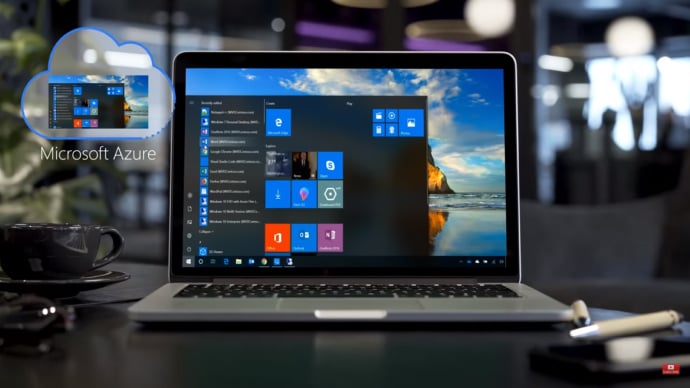



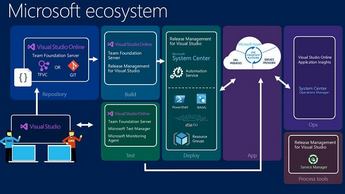










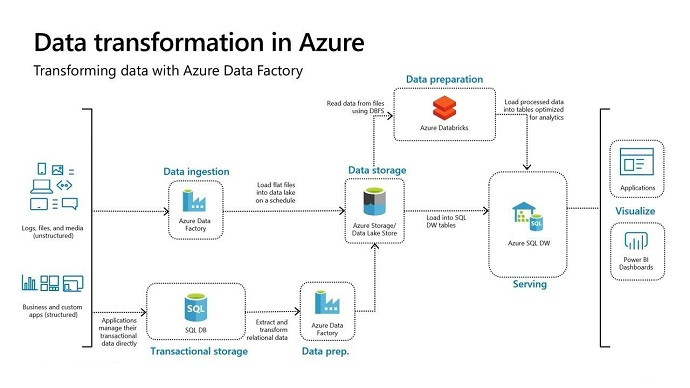









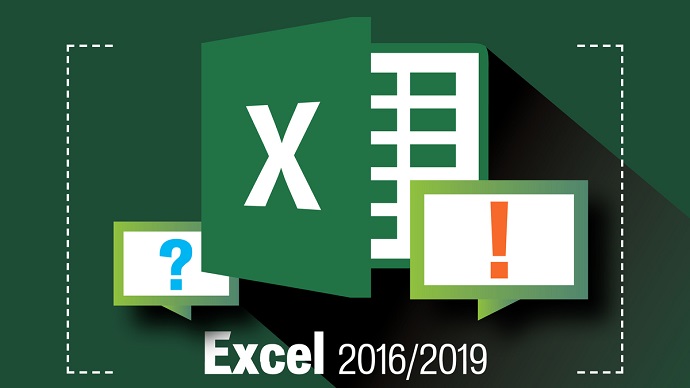





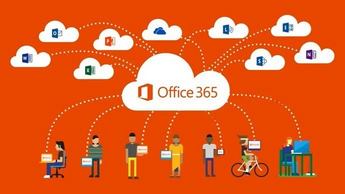
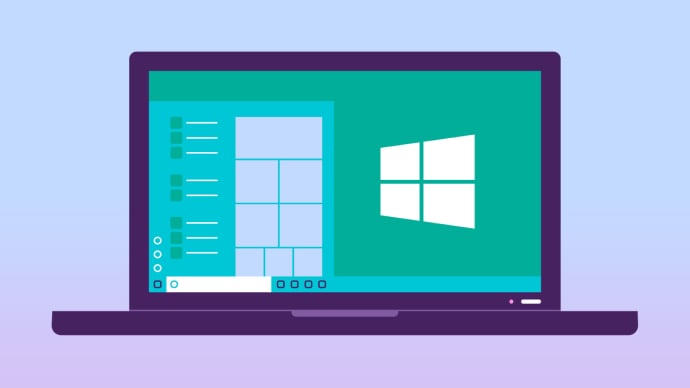









Only Registered Members can View Training Courses
Please fill out your email address below in order to view Training Courses. Registration is Free and Easy, You Simply need to provide an email address.
- Trusted by 1.2M IT Certification Candidates Every Month
- Hundreds Hours of Videos
- Instant download After Registration






